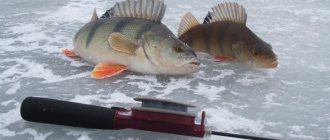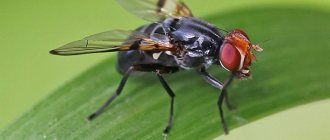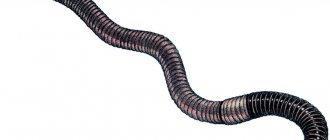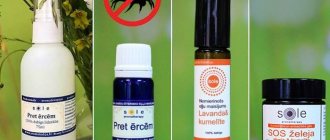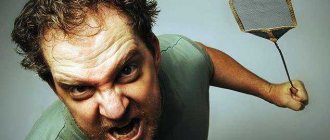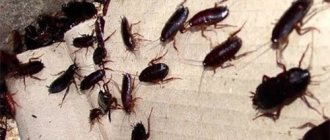Every fisherman knows that the more interesting and attractive the bait, the greater the chances of a rich catch. The mealworm is not inferior to maggots or zoobass. Does not require specific knowledge for successful breeding. Well suited for long-term storage. Used as part of groundbait and as stand-alone bait.
Meatworm larvae do not look very presentable, but are tasty for fish
Mealworm, aka mealworm or mealworm - who is it and what do fish eat it with?
The mealworm is the larval stage of the mealworm. It is sometimes called bobbit worm, mealworm, stoneworm, mealworm, or food worm. Beetles can grow from 2 to 3 cm, worms from 3 to 3.5 cm. The larvae are omnivorous, but prefer flour products. The larval stage of the mealworm is suitable for fishing.
Mealworms reproduce very quickly, but do not live long. This species is not related to earthworms. They are not hermaphrodites, so they need different-sex individuals for reproduction.
When breeding large colonies, gender is not particularly important, since there are usually females and males in the same cage. Quite an undemanding look. With good care and maintenance, the tormentor reproduces well at any time of the year.
Habitat
Khrushchak is widespread in the southern and northern regions of the Russian Federation, Europe and Asian countries. Settle in food warehouses and granaries. In nature, it is found inside rotten wood, under the bark. Prefers warm, damp places with a large accumulation of vegetation and organic matter. Causes significant economic damage every year. Not only the larvae cause harm, but also the beetles.
Life cycle
A female beetle can lay from 280 to 600 eggs. Maturation of the larvae takes from 10 to 20 days. Larval development depends on temperature and food availability. Under good conditions, the larvae grow in 3–4 months. Optimum temperature +20 +25 °C. They are able to go into suspended animation and live without food for 6 to 8 months.
Adult larvae begin to pupate when the temperature drops and there is no food. The pupal stage lasts from 10 to 40 days. The beetle lives from 90 to 140 days. The full development cycle lasts from 6 to 10 months. The timing of development directly depends on temperature and the availability of food.
The photo shows the life cycle of the flour beetle - from larva to beetle
Application area
The tormentor has a fairly wide range of uses. It is used as a food insect, bait or fish bait. They are also eaten. It is believed that larvae are an excellent source of protein.
Mealworms are eaten by both fish and people.
Interesting fact! In some countries, tormentor is bred on special farms. Adult larvae are cleaned, boiled and dried. The finished product is salted and sold to the public. Fans of protein supplements claim that dried worms taste like fried bread.
How to fight the parasite
Folk remedies
You can get rid of the parasite in the following ways:
- Removing larvae by sifting . The contaminated flour is sifted through a fine sieve. As a result of the procedure, the larvae, their shed chitinous coverings and excrement will remain in the sieve. True, eggs can pass through it. Therefore, the risk of re-infection still remains.
- Freezing . Contaminated food can be taken out to the cold or placed in the freezer. At low temperatures, adult insects, larvae, and eggs die. It must be remembered that the beetle tolerates temperatures up to +7 o C well, so food must be placed in a colder place.
- Heating . Another way to get rid of flour beetle is to heat the infected flour in the oven. The food should be heated at a temperature of 80-100 o C for 3-5 minutes. This will destroy all forms of insect if present in the flour.
- Destruction of products . If the larvae are infested in only one bag of flour, it can be destroyed. The best way to do this is to burn the infested food along with the pests. True, there is always a possibility that the mealworm has managed to lay eggs in other products, so the reappearance of parasites cannot be ruled out.
Insecticides
Mealworm larvae are extremely resistant to insecticides. The only effective way to get rid of them using chemicals is fumigation with phosphine. At the same time, there is always a risk of food contamination with poison. Therefore, treatment with insecticides against larvae is ineffective.
But on adults the chemicals have the desired effect. If you scatter universal insect poison in places where they can hide (the space under baseboards, narrow cracks), there is a high chance of destroying most of the adults.
Expert opinion
Mityuk Stefania Bogdanovna
Any poison used to control insect pests is suitable as an insecticide. You can use powders “Raptor”, “Raid”, “Mashenka” and others.
How to use when fishing
Muchnik serves as a good bait when catching herbivorous peaceful fish and some types of predators. Typically used for catching and feeding carp, carp, crucian carp, and roach. As bait, flourfish is suitable for catching perch, crucian carp, rotan and other representatives of ichthyofauna.
This bait often works during the cautious bite period. Sometimes trophy specimens peck at mealworms, which are suspicious of the smell of dung worms. The larva has virtually no odor and does not scare away fish even in hot periods. The attachment is suitable for bottom, feeder and float fishing. Used in winter fishing as an alternative to maggot.
To enhance the mobility and smell of bait, larvae are often added to the complementary food.
The downside to using it is that the worm quickly dies in water. Therefore, you need to do frequent recasts and update the composition.
How do these insects appear in the house?
As mentioned above, Khrushchak residents are primarily interested in granaries and large food warehouses. By themselves, they practically do not attack human habitation. And yet, sometimes we find these pests among our supplies. How do they get there? It would be logical to assume that from the places where the packages of flour or cereal came from. This often happens when, due to an oversight, pests appear inside the storage facility, but no one destroys them. Damaged products end up in stores and then in our kitchens. However, this is not the only possible way. Sometimes everything turns out to be more complicated: pigeons and sparrows can transfer eggs and larvae from the same warehouses to the attics of our houses. And, since there is nothing special to profit from there, the beetles descend into our apartments (for example, through the ventilation).
Where to look for mealworms
Broodstock can be purchased at a pet store or from breeders. To develop a colony you will need 30–50 larvae or 10–20 adult beetles. Once a year it is better to buy a small amount of beetles or larvae to renew the blood.
You can find worms in rotten wood and grain processing plants. And also in grain warehouses, poultry houses and in household products.
Some fishermen practice luring beetles. To do this, flour and bread crumbs are poured into a jar or ceramic pot. The trap is placed outside under a lantern or lamp. Beetles fly towards the light at night and gather near the feeder.
Worm summoning can only work in places where beetles and larvae permanently live. Near granaries, rotten stumps or poultry farms.
Signs of parasites in the kitchen
Timely detection of the appearance of pests of cereals, flour and other dry shelf-stable products in the kitchen will help the housewife save most of the supplies and maintain the budget. If the following appeared in the kitchen:
- Cobwebs on the surface of flour or semolina.
- Small holes in beans, nougat, peas.
- Excrement in dried fruits.
- Worms in cereals, noticed during washing, as well as cocoons of larvae.
- Cereal grains glued together.
then you should immediately take measures to combat uninvited guests in the kitchen.
How to store mealworms
The advantage of this type of worm is the convenient storage of finished bait. Adults should be distributed into small containers and stored in the refrigerator. In this form, the flour can be stored for 6 to 10 months without feeding or replacing the substrate.
It is important to avoid overheating and getting wet. Small plastic containers or regular jars are suitable for storage. A nutrient substrate is poured onto the bottom and worms are planted. In a container with a volume of 200 g, you can comfortably accommodate from 300 to 400 individuals.
Storing larvae
Worms need air, even in a state of suspended animation. Therefore, holes are made in the lid for ventilation. Can be stored in a tall container without a lid.
Worms can also be stored in any cool place where the temperature is within +2 + 10 °C. As the temperature rises, the larvae begin to pupate. Worms tolerate short-term drops of up to – 2 °C.
How to get rid of bugs
If the bugs were found in small quantities, it means that they did not have time to multiply and the products can be saved in the following ways:
- Preheat the oven to 150 degrees and warm up all the infected cereals.
- You can freeze bulk products in the freezer for 24 hours.
- Insects from legumes can be lured out with salt water. You need to fill them with it and wait a few minutes. They will float to the surface. The legumes are dried.
- If pests have affected the entire grain, then it should be thrown away immediately.
If pests appear in cabinets, the following measures must be taken:
- All grains are thrown away, and the surfaces themselves are washed with soapy water.
When they are dry, they should be treated with a vinegar solution. It is done like this: 1 tbsp. spoon per 1 liter of water. This mixture can also be used to fill cracks. - Jars for storing cereals should be thoroughly washed with laundry soap
and boiled or doused with boiling water. - If bulk products were stored in fabric bags
, then they must be washed and rinsed in salt water, then dried. - Many people scatter pyrethrum, obtained from Caucasian chamomile, in pest control cabinets.
This drug is safe for humans, but lethal for beetles. Treatment should be done periodically once a week. - You can also spread the following composition on kitchen surfaces: fine grains, borax and powdered sugar.
All components are taken in equal shares. The resulting product is laid out on pieces of paper. This composition will not harm people, but will kill insects. - Garlic, lavender or bay leaf will help repel pests.
How to breed mealworms at home: instructions from A to Z
Breeding mealworms is not difficult. The larvae do not have a pronounced odor, so they are perfect for keeping in an apartment.
Selection of queen cell
Highly plastic containers, terrariums, aquariums, metal buckets or wooden boxes lined with tin are well suited for home breeding.
A lid is required if the container is below 20–30 cm. You can cover the container with a fine mesh. To prevent the worms from scattering, coat the edges of the container with Vaseline.
If the container is equipped with a tight lid, a ventilation window is made in the side of the container, which is sealed from the inside with a mesh. Sometimes holes are made in the lid.
ATTENTION! Queen cells should not be placed in the sun or near heating devices. It is better to choose a warm, shaded place for the beetles.
Substrate for breeding
To make up the substrate, a mixture of sawdust, flour, rolled oats and bran is used. All ingredients are ground and poured into the mother liquor. The height of the substrate is from 10 to 30 cm, the thickness depends on the number of individuals. The layer of the nutrient mixture should be 10–15 cm below the edge of the container.
Mealworms can be propagated in a properly composed substrate.
You can place egg cells or rotten pieces of wood on the surface of the substrate. This will increase the area of the queen cell and make feeding easier. You can put wet food on the cardboard without the risk of the substrate becoming waterlogged.
It is necessary to monitor the condition of the mixture. If mold or rot forms, you need to urgently clean the area or completely replace the substrate.
Breeding mealworms at home and growing them on a special farm:
How to grow and what to feed mealworms
In addition to the main food, which is the substrate, worms happily eat various foods. It is better to feed the colony every day in small portions. It is best to grind the feed before serving.
What can you feed the larvae:
- boiled egg;
- grated carrots;
- apple;
- bone or fish meal;
- potato;
- dry food for cats and dogs;
- feed or bran;
- banana peel;
- baby dry formulas;
- gammarus, daphnia or other fish food;
- bread crumbs, breadcrumbs;
- powdered milk.
The larvae are omnivores, but don’t get carried away and feed them just anything. It is better to follow a certain diet and feeding regimen.
Important! It is necessary to remove food residues from the substrate. In dry mixtures, rot and mold develop rapidly. A spoiled substrate can destroy the entire colony.
For watering, you can place a jar lid with a piece of damp sponge on the bottom of the substrate. The sponge is moistened or changed as needed.
Humidity and temperature
There is no need to moisten the substrate. As a last resort, you can slightly moisten the piece of wood or cardboard. You cannot spray the substrate itself.
The optimal temperature for reproduction and growth is from +20 to +25 °C. If the room is cold, a terrarium heater or heating cord is installed in the queen cell.
Screening of breeding stock
The beetles should live in the queen cell for 2-2.5 months. After this, using a sieve, adult individuals are separated from the substrate and moved to a new container.
Adult beetles need to be isolated from larvae
Important! If the beetles are not removed, they will eat the eggs.
The larvae grow and develop from 1 to 3 months. Then they need to be divided into containers and stored in the refrigerator or other cool place. If the worms are not removed in time, they will pupate and turn into beetles.
Restocking
Some fishermen buy additional beetles in stores. But you can establish your own uninterrupted breeding. To do this, adult worms are placed in a separate container and not fed. After 10–20 days, the beetle emerges from the pupa.
Beetles can also be grown from larvae, but you just need to remove them from the larvae in time
You should not immediately transplant the beetles into a common queen cell. You need to wait until the wings harden. This can be easily determined by the color. Beetles are born with white or cream-colored elytra. As they mature, they become black or dark brown. The hardening process takes about 10 days.
Professional moth extermination
In order to order the destruction of moths and worms at a competitive price and with a guarantee, you need to leave a request for the destruction of moths or call the phone number indicated on the website. Our socialists will arrive at a convenient time and disinfest your apartment from all insects
We use only proven products that are absolutely safe and effective. Warranty service - 3 years . The cost of treating an apartment against moths and worms is from 1,700 rubles.
Preventing moths
Moths are difficult to get rid of. With adult insects the situation is simpler - you can even kill it with a newspaper. The situation is much worse with larvae crawling all over the kitchen, and eggs that can be laid even in the cracks of kitchen cabinets. Therefore, it is easier to take preventive measures:
- inspect food containers every month (moths can live in tightly closed jars);
- destroy products in which cocoons, cobwebs, and larvae have appeared;
- regularly wash cabinets with soap and soda solution;
- in winter, periodically take jars of cereals and flour out onto the balcony;
- Carefully inspect bags of cereals, nuts, and dried fruits before purchasing (even if the larvae are not visible, you should refuse the purchase if lumps or dust are detected).
As you can see, moths in the kitchen are a phenomenon from which even the cleanest housewives are not immune. Therefore, you need to carefully ensure that the products you buy are not already contaminated with moths. It is better to store cereals and dried fruits in sealed containers that moths cannot gnaw through and infect other products. If the moth has already appeared, there are many folk and chemical remedies that will help cope with the problem and destroy the insects.
Adding mealyworms to bait
Worms are added to complementary food directly on the pond before casting. The mealworm is not very durable in water, so you need to check and fill the feeder more often. It should be remembered that groundbait and bait should be similar. Therefore, if a beetlefish is added to the feeding mixture, it is better to fish with the same bait. Both live and dried worms are added to complementary foods.
Well suited for luring bream, white bream, crucian carp, carp, carp and other fish that are not averse to tasting a tasty worm. Bait and groundbait with flour can be used at any time of the year.
With the right approach to breeding flourfish, you can not only provide yourself with bait throughout the year, but also make money on the surplus. Maintaining a Khrushchak does not require much labor or financial investment. The advantages of bait are its versatility and long shelf life of the finished bait.
Folk techniques for fighting the cockchafer
Experienced gardeners recommend an infusion of onion peels in a ratio of 100 g/10 l of water, leave for a week and treat the soil under the plants. To spray plants, dilute the solution again in a 1:1 ratio.
If 1-2 larvae or adult beetles were found in the spring, then it is necessary to add (1%) to the soil and treat the plants (0.1%) with a solution of potassium permanganate.
When cultivating the soil in spring, you can add freshly slaked lime or a chlorine-containing preparation. The smell of lime and chlorine will repel beetles trying to lay eggs.
A solution of ammonia will drive away the beetles. Use a solution of 20 ml per 10 liters of water and spray the plants in the fall. The beetles will leave without forming oviposition on the planting.
Important points
When breeding worms at home, it is important to regularly sift the substrate and maintain the process. As the larvae develop, the nutrient content in the soil decreases significantly. Therefore, once the young worms have changed from one form to another, you need to remove the remaining unformed worms and then place them in a third container. In turn, the first box should be thoroughly disinfected and several inches of substrate should be placed in it. Only after this can the worms be returned.
In order for the worms to grow as quickly as possible, it is important to provide them with plenty of light. Keeping animals in the dark is strictly prohibited. Otherwise, they will stop developing or die.
Experienced farmers recommend using large cages, because the larger their surface area, the more comfortable the larvae will feel. Containers are cleaned of waste and remaining food as often as possible. The burlap should have long slits that will ensure adequate air ventilation.
Also, sometimes it is necessary to separate some individuals from others so that they pupate faster. Only after this the pupae are returned to the others.
To set up a worm farm use:
Place bran and a source of moisture at the bottom of the container. As a container, you can use a cardboard egg box, which is pre-moistened with water. Inside the tray, comfortable humidity should be maintained within 60-70 percent, as well as a temperature range of 26-28 degrees Celsius. The required humidity is achieved by spraying with a spray bottle.
For mealworms, comfortable humidity should be maintained within 60-70 percent, as well as a temperature of 26-28 degrees Celsius.
Why do cereals get bugs?
You do excellent housekeeping, do wet cleaning every day, clean and wash all the cabinets where food is stored with enviable regularity, so where do these pests come from in the kitchen, why do they appear?
You should not blame yourself and doubt your own housekeeping and cleanliness. As a rule, insects appear in cereals as a result of non-compliance with sanitary control at the factory: unscrupulous manufacturers often do not carry out the necessary heat treatment of products, and also store them incorrectly.
And even if you buy bulk products exclusively in vacuum bags, there is no guarantee that there are no living creatures in them.
Bugs in cereals can also appear due to the wrong neighborhood - they can simply move from dried fruits, pasta, flour, tea, coffee or even hot spices purchased in bulk and not immediately treated for possible pests.
